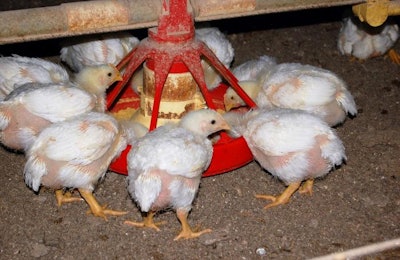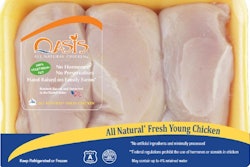
Two trends that may well shape the poultry industry in 2018 are the rise of animal welfare pledges and the adaptation of technological advancements in animal agriculture.
As part of the quarterly WATT/Rennier Poultry Confidence Index survey, WATT Global Media will be asking questions about the state of the industry and emerging trends, technologies and challenges. Here’s the results of four questions posed in surveys conducted at the end of 2017 and the beginning of 2018 which focused on animal welfare issues and the challenges presented by emerging technologies.
McDonald’s animal welfare policy
McDonalds Corp., a massive influence in the global restaurant and food industry, broke away from the pack in October 2017 with an animal welfare policy that promises “improved welfare outcomes” by 2024 for the chicken it sources in 14 global markets, including the U.S. Conspicuously absent from the announcement was the use of a third-party welfare standard like the Global Animal Partnership’s (GAP) or Royal Society for the Prevention of Cruelty to Animals (RSPCA) program.
When asked: “Which of the following statements most closely reflects your opinion of McDonald’s announcement of its new broiler welfare policy?”
- 46 percent responded, “I think it is a reasonable attempt at establishing a middle ground between current industry practices and activist group driven welfare programs.”
- 39 percent responded, “I think it’s a bad idea because current industry practices do an adequate job protecting bird welfare.”
- 14 percent responded, “I think that it will ultimately fail. McDonalds will eventually move to a third-party welfare policy like GAP or RSPCA”
Environmental enrichments for broilers
Animal welfare policies like GAP or RSPCA’s standards call often call for enriched environments for broiler birds. These objects are designed to give birds an outlet to perform natural behaviors like pecking and scratching, and mentally engage the animal. This is supposed to lead to better animal welfare and greater bird performance.
When asked: “Do you believe animal welfare-focused enrichments – hay bales, perching areas, pecking objects, etc. – result in better flock performance?”
- 46 percent responded, “Maybe, they could enhance performance but it can’t be proven one way or the other.”
- 36 percent responded, “No, enrichments do nothing to improve flock performance.”
- 18 percent responded, “Yes, they enhance animal welfare, and there are significant improvements in performance.”
The future of lab-grown meat
Lab-grown meat, branded as “clean meat,” was one of the key technology trends of 2017. As opposed to plant-based alternative proteins and sophisticated meat look-a-likes, lab-grown meat is actual muscle tissue grown without an animal. In January 2018, Tyson Foods Inc. invested in Memphis Meats, a leading company in the space.
When asked: “Start-up companies like Memphis Meats are developing technology to create edible meat products without slaughtering an animal. Which statement most accurately reflects your thoughts on the future of the technology?”
- 49 percent responded, “Lab-grown meat will not be a viable alternative to modern meat production techniques in my life time and it won’t impact demand for animal protein.”
- 43 percent responded, “Lab-grown meat will be commercial available in my life time, but it won’t significantly impact the domestic and global meat market.”
- 8 percent responded, “Lab-grown meat will play a significant role in the U.S. and global food supply in my life time.”
Robotics in the poultry industry
Artificial intelligence is making great strides and will soon see advanced application in all fields, including animal agriculture. Potentially, AI technology – combined with enhanced machine vision and data analytics technology – could enable more efficient poultry processing and drones capable of performing tasks inside poultry houses.
When asked: “Drone technology and robotics are entering the global poultry industry. What role will they play in live production?”
- 78 percent responded, “Robots will supplement the human workforce, but the technology’s role will be limited.”
- 11 percent responded, “Robots will eventually replace the majority of the human workforce working inside of poultry houses.”
- 11 percent responded, “Robots are a novelty product that will never replace human workers.”

















